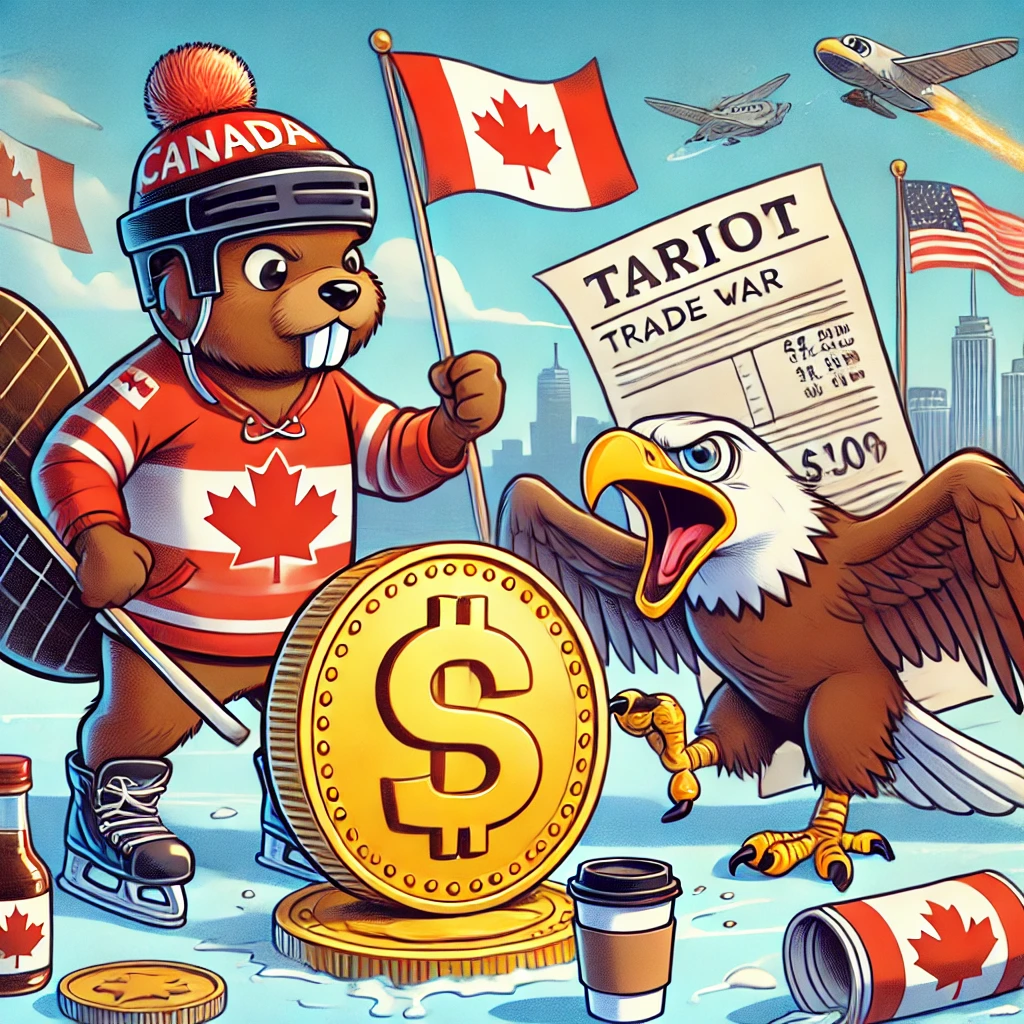Tariffs are a bit like an unexpected snowball fight—except instead of snow, we’re lobbing price hikes and potential job losses at each other. The latest round of U.S.-Canada tariff tensions has businesses on edge, consumers groaning, and economists clutching their spreadsheets. Yet, there’s a bright side: Canada has a chance to transform this trade war into a policy advantage.

Published on February 2, 2025
Tariffs: The Uninvited Guests at the Economic Campfire
Imagine you’re at a cozy campsite. The fire is crackling, you’re settling in with a hot drink, and out come the mosquitoes—unasked for, irritating, and persistent. That’s the effect of tariffs: they arrive just as the economy warms, taking a bite out of businesses and consumers alike.
The U.S. imposes levies on Canadian goods; Canada responds with countermeasures worth billions of dollars. It’s all a bit reminiscent of a polite—but still forceful—Canadian standoff. The real question, of course, is how does Canada tip the scales in its favor?
Step 1: Make the Loonie Competitive Again
For decades, global trade has favored the American dollar. Rather than scrambling for gains in a tariff-heavy U.S. market, Canada can pivot toward alternative trading partners—Europe, Asia, and beyond. By increasing exports outside the U.S., we boost global demand for the Canadian dollar, strengthening its position.
Imagine the Canadian dollar becoming a sought-after currency for its stability and economic fundamentals—less like a meme stock, more like a solid investment. The more Canada diversifies its trade, the less reliant it becomes on American fluctuations.
Step 2: Introduce the “Maple Magnet” Strategy
American businesses caught in tariff crossfire might be open to moving north if we roll out the red-and-white carpet. With well-designed tax reforms and regulatory incentives, Canada can position itself as the obvious choice for expansion and investment.
If you’re a U.S. company debating whether to expand stateside or cross the border, the goal is to make Canada irresistibly appealing: friendlier tax conditions, fewer tariff concerns, and a reputation for economic stability. It’s the Tim Hortons effect—why settle for a lukewarm alternative when a more welcoming, familiar option stands ready?
Step 3: The Quiet, Strategic Flex
There’s no need for noisy grandstanding. Canada can employ its characteristic understatement while making calculated moves:
Shift trade deals to build diversified, resilient partnerships.
Offer favorable business conditions so companies find it natural to invest here. Highlight our stability—a robust banking system, prudent monetary policies, and a track record of well-managed resources. While the U.S. juggles various economic fires, Canada can quietly fortify its position in the global market, reducing exposure to potential American volatility.
Final Thoughts: Turning Tariff Lemons into Poutine
Tariffs may be inconvenient—nobody enjoys sudden cost increases or market uncertainty. But with a proactive, offensive economic strategy, Canada can:
Expand into new markets.
- Make the loonie more appealing globally.
- Attract investors through forward-thinking policies.
If the U.S. insists on playing hardball, we’ll do what Canadians do best: stay calm, stay strategic, and find an advantage in cooperation. After all, there’s nothing more Canadian than converting a bumpy situation into an opportunity—rather like turning a bag of potatoes into a hearty dish. And who knows? If all else fails, maybe we’ll just put a “foreign premium” on Tim Hortons coffee and see who blinks first.
By steering the conversation toward adaptation and openness, Canada can come out not only intact but stronger. When the dust settles, it won’t be the loudest economy that wins, but the one that’s quietly built the most resilient path forward.